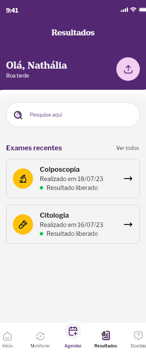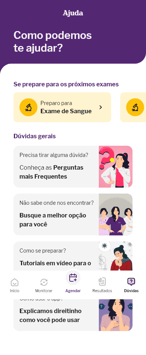Appointment Scheduling and Health App
Project developed for the client • App • Research • Workshops • Interviews • Ideation • Prototype
THE PROJECT
THE PROBLEM
The project proposes an innovative approach in the field of women's health by creating a dedicated app for scheduling and accessing exam results, potentially incorporating a digital medical record. The goal is to relieve the client, who currently relies on a large team dedicated solely to exam scheduling, and elevate the client to the level of major innovative brands in the healthcare sector.
The current scheduling process consumes time and resources that could be saved with an efficient app. Additionally, patients hesitate to schedule appointments online due to limitations in the current app, which requires human intervention to complete the process and does not allow direct sharing with the doctor, compromising efficiency and tarnishing the user experience.
THE SOLUTION
The project suggests an innovative approach in the healthcare field through the creation of a dedicated app, aiming to enhance the experience for both patients and healthcare professionals. By facilitating appointment scheduling, access to results, and the management of digital medical records, the platform aims to contribute to a more efficient interaction between the brand and its customers. Furthermore, the centralization of relevant information can generate valuable insights, enabling a deeper understanding of patient needs, favoring service personalization, and promoting target audience loyalty and satisfaction. This project seeks not only to optimize the user experience but also to strengthen the brand's position in the healthcare landscape.
THE PROCESS
Understanding the Healthcare Market
To better serve the client and achieve their objectives, we began by researching and analyzing data from health tech companies, direct and indirect competitors, and technological innovations in general that could assist in understanding and conceptualizing the challenge presented by the client.
We discovered a range of advancements, from telemedicine solutions to integrated platforms for medical data management; identified gaps in existing practices; and gained valuable insights into emerging trends, such as artificial intelligence applied to healthcare and remote monitoring devices.
All data was collected and organized on a collaborative platform.
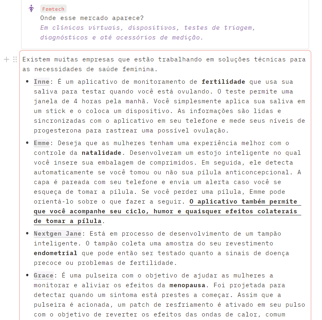

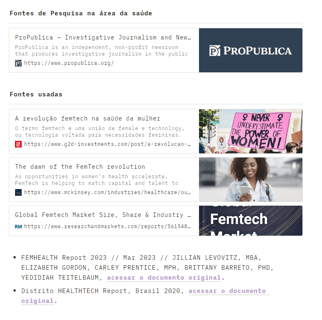

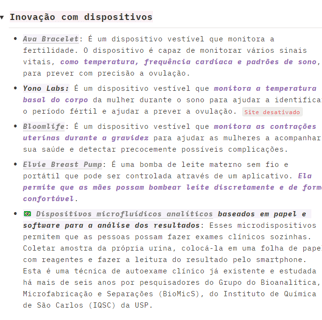

Understanding the Current Product
With a good understanding of the healthcare market and knowledge of existing practices among competitors, we turned our attention to the client to understand their current state: what the product and services offered were, and how they were serving (or not serving) their customers and users.
We created specific questionnaires to interview patients, employees, and doctors, and visited one of the client's facilities. Afterward, we transcribed the interviews and analyzed the collected data, highlighting important information, presenting problems, and suggesting potential solutions.
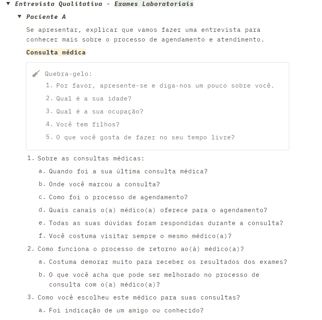

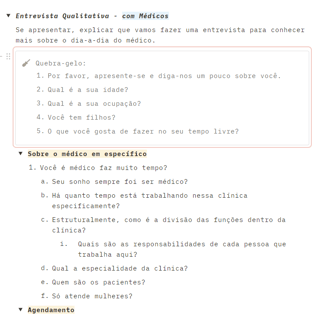

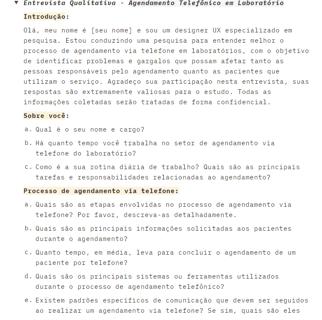

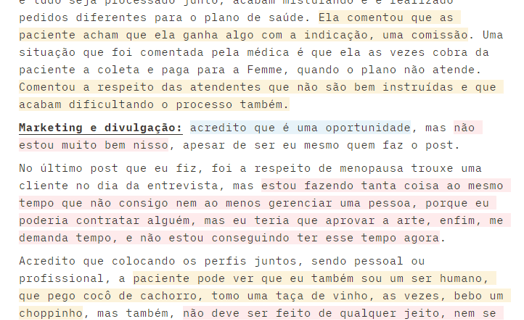

The Ideal Scenario
The next step in understanding the product and the client was to create the ideal scenario.
We organized two workshops: in the first one, we spoke with employees responsible for the appointment and exam result system, including the release of orders with health plans; in the second one, we gathered doctors and sales representatives to discuss the possibility of creating a medical record integrated into the patient's app, enabling a simplified appointment scheduling process directly from the doctor's office and providing direct and easy access to exam results and patients' health history.
The goal of the workshop was to create the complete experience, both from the user's perspective and the operational side, encouraging brainstorming without considering operational or technological constraints initially.
As we put all the ideas on the table (or rather, on the wall), our team, composed of designers and programmers, helped participants break down their ideas, separating what was feasible in the initial stages from what we still lacked the technology, manpower, or budget to develop.






Analyzing Data and Ideating Solutions
With all the data in hand, we returned to the computer to sort and organize the collected information and ideate solutions.
For confidentiality reasons, I present only a few images here.





Prototyping
After presenting solutions to the client, we moved on to prototyping.
The client already had a well-established and recognized brand in the market, so visually, we followed their guidelines and adapted small details.
For confidentiality reasons, I also present only a few images here.


